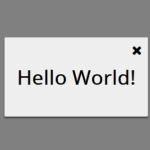| Author: | nathanssantos |
|---|---|
| Views Total: | 720 views |
| Official Page: | Go to website |
| Last Update: | October 17, 2022 |
| License: | MIT |
Preview:

Description:
Wondering how your business is doing over time? Use this animated, responsive, and highly customizable evolution graph built with Vanilla JavaScript to create flexible data visualizations.
See It In Action:
How to use it:
1. Install & download.
# Yarn $ yarn add evolution-graph # NPM $ npm i evolution-graph
2. Import the Evolution Graph.
import EvolutionGraph from "evolution-graph"; import "evolution-graph/src/css/styles.css";
3. Prepare your data for the Evolution Graph.
const data = [
{
label: "Item1",
className: "Item1",
color: "#000",
image: "1.svg",
values: [0, 3, 4],
},
{
label: "Item2",
className: "Item2",
color: "#333",
image: "2.svg",
values: [0, 2, 4],
},
{
label: "Item3",
className: "Item3",
color: "#666",
image: "3.svg",
values: [0, 2, 3],
},
// ...
];
const labels = [
"01/01/2001",
"01/01/2011",
"01/01/2021",
// ...
];4. Create a container to hold the graph.
<div id="evolution-graph-example"></div>
5. Initialize the Evolution Graph.
const graph = new EvolutionGraph({
data,
labels,
barThickness: 30,
renderValue: (value) => `${value}k`,
onChange: (currentStep) =>
console.log("Evolution Graph currentStep", currentStep),
});6. Draw the graph.
graph.create("#evolution-graph-example");7. Full graph options and callback functions.
const graph = new EvolutionGraph({
data: [],
labels: [],
className: "",
order: "desc", // "desc" or "asc"
stepInterval: 1500,
transitionTopInterval: 750,
gap: 10,
barThickness: 20,
barLabelWidth: 100,
timelineTrackThickness: 4,
timelineTrackColor: "rgb(206, 206, 206)",
timelineTrackFillColor: "rgb(9, 132, 227)",
timelineMarkerSize: 14,
timelineMarkerColor: "rgb(206, 206, 206)",
renderValue: (value:Number) => value,
onChange: (step:Number) => step,
}),8. API methods.
// render the graph graph.create(selector:String) // set the current step graph.setCurrentStep(step:Number) // go to the previous step graph.goToPreviousStep() // go to the next step graph.goToNextStep() // play/pause the graph graph.play() graph.pause()
Changelog:
10/17/2022
- v1.2.15










